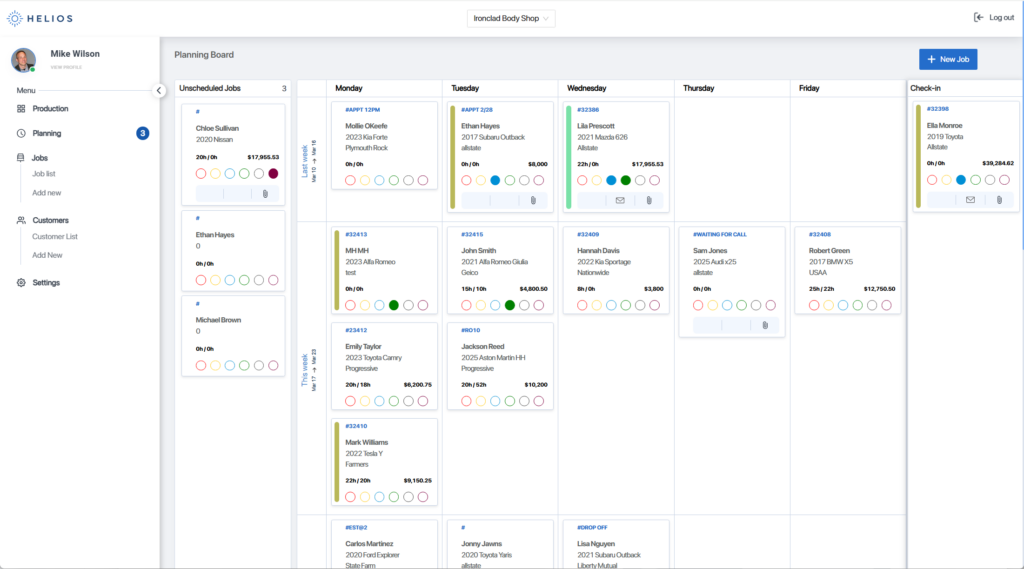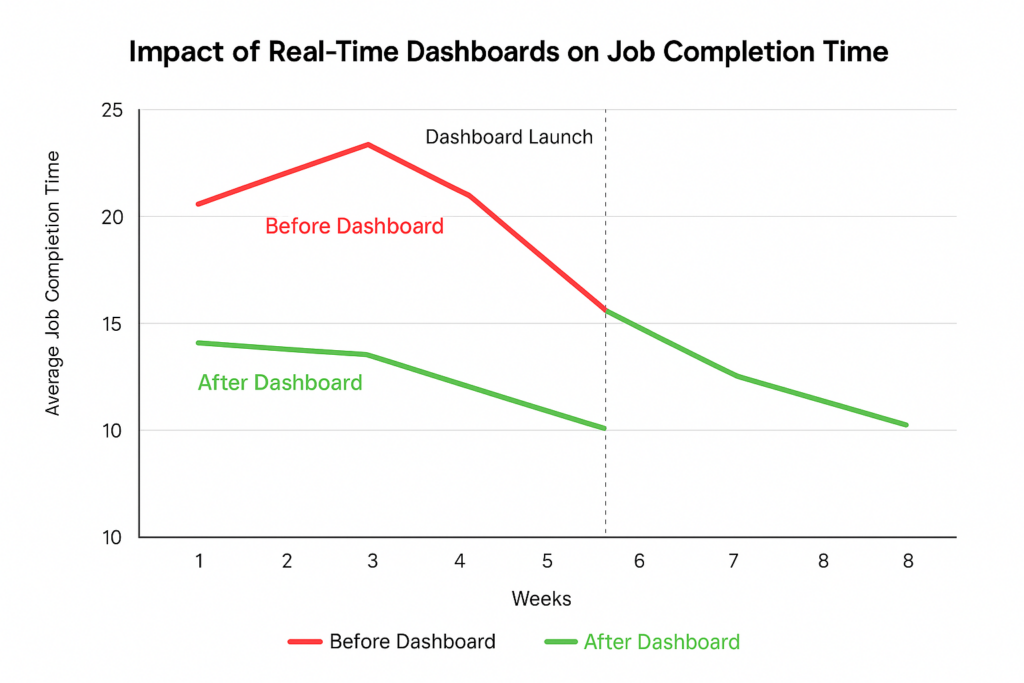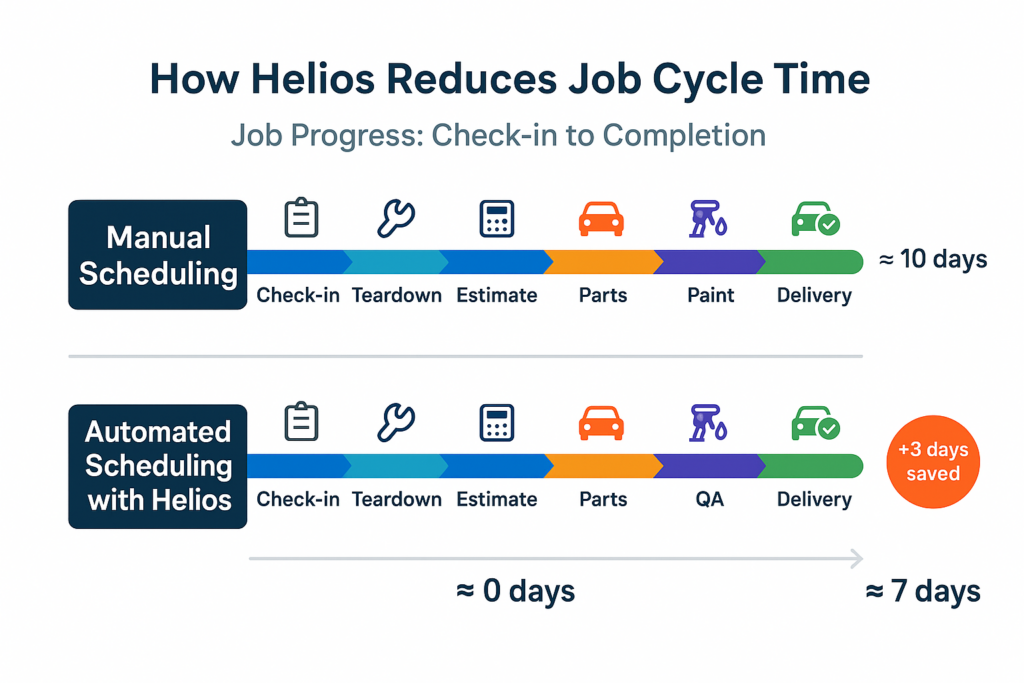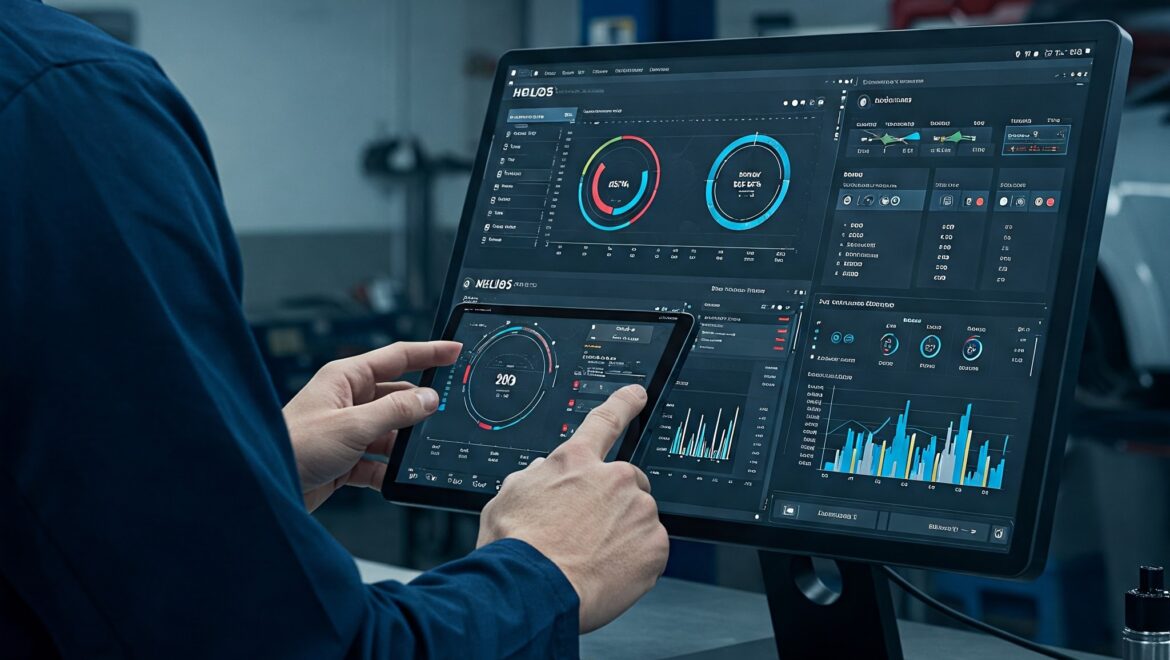If you’ve ever asked, “Where’s that job at?” more than twice in a day, chances are your shop’s productivity isn’t being tracked effectively. In a fast-paced auto repair environment, visibility is everything. Without it, you’re flying blind—jobs get delayed, techs get confused, and customers lose confidence.
That’s where real-time dashboards come in.
These visual command centers are transforming how modern shops operate—providing instant updates, boosting communication, and turning chaos into clarity.
In this article, we’ll break down how real-time dashboards are redefining productivity for repair shops, what metrics to track, and how platforms like Helios are leading the charge.
The Visibility Problem in Most Repair Shops
Paper Systems and Static Scheduling
Even today, many shops rely on paper-based job boards, spreadsheets, or outdated whiteboards. While these tools may seem simple, they’re also static—and quickly become outdated. As a result, technicians waste time asking questions, and managers scramble to update status reports manually.
Chasing Updates = Lost Time
Service writers and shop owners often resort to walking the floor or calling techs to check on progress. This time adds up, especially across multiple bays or locations.
Miscommunication and Rework
When job status isn’t clear, things fall through the cracks—like a vehicle getting painted before the frame work is complete. That leads to expensive rework, lower team morale, and customer complaints.
What Are Real-Time Dashboards in Auto Repair?
A real-time dashboard is a centralized digital interface—accessible via desktop, tablet, or mobile—that displays live updates on job progress, technician assignments, and production bottlenecks.
Think of it as a heads-up display (HUD) for your shop:
-
Each job is color-coded based on its stage
-
Technicians can update their progress from a tablet or phone
-
Managers can view the entire shop (or multiple locations) at a glance

6 Ways Real-Time Dashboards Boost Productivity
1. Task Tracking at a Glance
Managers can instantly see what each tech is working on. No more calling out names or checking post-it notes. Jobs are organized, color-coded, and filterable.
2. Less Back-and-Forth
Because updates are visible in real time, service writers don’t need to chase techs or make “status calls.” Everyone—from the front desk to the back bay—is on the same page.
3. Clear Job Flow = Fewer Mistakes
Visual dashboards eliminate confusion over job order and stage. If a vehicle is waiting on parts, it’s flagged. If it’s ready for delivery, it’s obvious.
4. Bottleneck Detection
You can spot production slowdowns early. If the paint bay consistently backs up, you’ll know before it becomes a pattern.
5. Manage From Anywhere
Cloud-based dashboards (like Helios) let shop owners check in from their phone—whether they’re across town or across the country.
6. Data-Driven Decisions
Track KPIs and team performance over time. See which techs are most efficient, where delays occur, and what types of jobs are most profitable.

Real Shop Scenario: From 4-Hour Meetings to 30 Minutes
“Before Helios, we spent half our morning figuring out who was working on what,” says Dan, owner of a multi-bay repair shop in Phoenix. “Now, everything is color-coded and live. Our daily huddles dropped from 4 hours to 30 minutes.”
Here’s what changed after going real-time:
-
30% decrease in job delays
-
40% reduction in daily planning time
-
60% fewer internal status-check messages
“My team feels more in sync. I feel like I’m finally running the business, not chasing it.” — Dan, Shop Owner
Metrics That Matter: What to Track
The best dashboards don’t just show what’s happening—they help you understand why.
Essential KPIs:
-
Total jobs in production
-
Paint hours / frame hours
-
Technician efficiency (jobs/day or hours billed)
-
Average time per job stage
-
Bottlenecks per week or month
-
Missed delivery deadlines
-
Job value in production
Bonus Tip: Filter by customer, insurer, location, vehicle make/model, or even job type to uncover hidden trends.

What to Look for in a Real-Time Dashboard Tool
Not all dashboards are created equal. Look for features that prioritize clarity and control.
Must-Have Features:
-
Mobile & tablet access
-
Color-coded job stages
-
Technician assignment tracking
-
Live status updates
-
Multi-location visibility
-
Custom filters
-
Archive and performance reports
Pro Tip: Choose software like Helios that’s built specifically for auto shops—not generic project tools.
Conclusion
You can’t improve what you can’t see.
Real-time dashboards are no longer a luxury—they’re the new standard for running a productive, profitable repair shop. By providing instant visibility, better communication, and actionable insights, they eliminate guesswork and empower your entire team.
Ready to take control of your shop’s productivity?
Book your Helios demo today and see how our real-time dashboard can transform your workflow in just 15 minutes.



